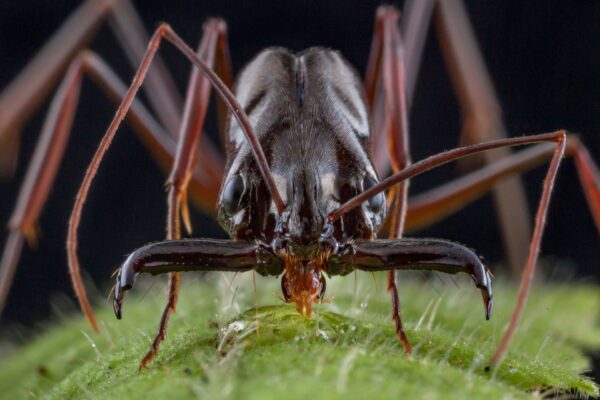

The Washington Post and other outlets reports on a paper released by the Proceedings of the National Academy of Sciences, a group of scientists from the University of Hong Kong analyzed 489 studies and concluded that the total mass of ants on Earth weighs in at about 12 megatons of dry carbon, a standard way of measuring animals’ biomass. But ants are in trouble. The worldwide decline of entomofauna presents a clear threat to all life on Earth.
“It’s the ants’ world, and we’re just visiting.
A new estimate for the total number of ants burrowing and buzzing on Earth comes to a whopping total of nearly 20 quadrillion individuals.
That staggering sum — 20,000,000,000,000,000, or 20,000 trillion — reveals ants’ astonishing ubiquity even as scientists grow concerned a possible mass die off of insects could upend ecosystems.
Put another way: If all the ants were plucked from the ground and put on a scale, they would outweigh all the wild birds and mammals put together. For every person, there are about 2.5 million ants,” writes environmental reporter Dino Grandoni.
“…Or as renowned author and myrmecologist (that means ant scientist) E.O. Wilson once put it: “No matter where I go — except possibly Antarctica or the high Arctic, and I don’t go there because there are no ants there — no matter how different the human culture, no matter how different the natural environment, there are the ants.”


A figure of “20 quadrillion (20 x 1015) is double E. O. Wilson’s very rough calculation published in 1994 – the first scientific effort to estimate ant numbers by extrapolating from south-eastern England. However, even the paper’s estimate leaves out members of colonies that don’t leave their nests to forage, plus areas such as boreal forests where data is sparse,” according to IFL Science.
The particular study was not funded by the E.O. Wilson Biodiversity Foundation, however the science of the Half-Earth Project has plans to put ants on the Half-Earth Project Map with the objective that land managers can visualize the richness and rarity of ant species during conservation decision-making. Visualizing this scientific data draws attention to important global policies on biodiversity, such as the Convention on Biological Diversity, and the Biden-Harris America the Beautiful Initiative, of which, both seek to preserve 30% of land and sea, nationally, and globally, for Nature.
The late E.O. Wilson (1929 – 2021) was first and foremost, a “bug guy” who once said, “most kids have a bug phase, I never left mine.” Wilson’s own scientific research with with fellow biologist Bert Hölldobler, led to the theories that seeded the principles of “Half-Earth” – the concept that if we protect sufficient land and seas, the right area, studied for its biodiversity, then we can protect all life on Earth against the extinction threat.

